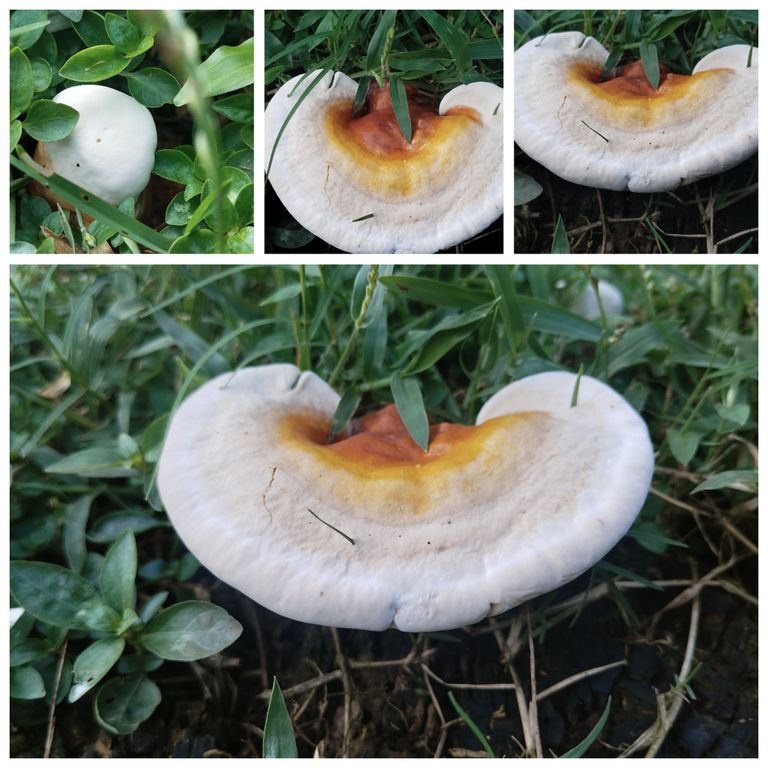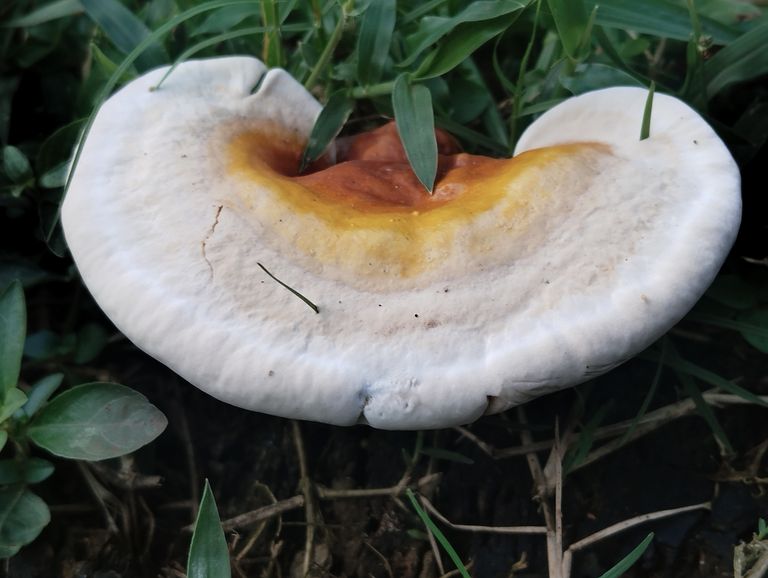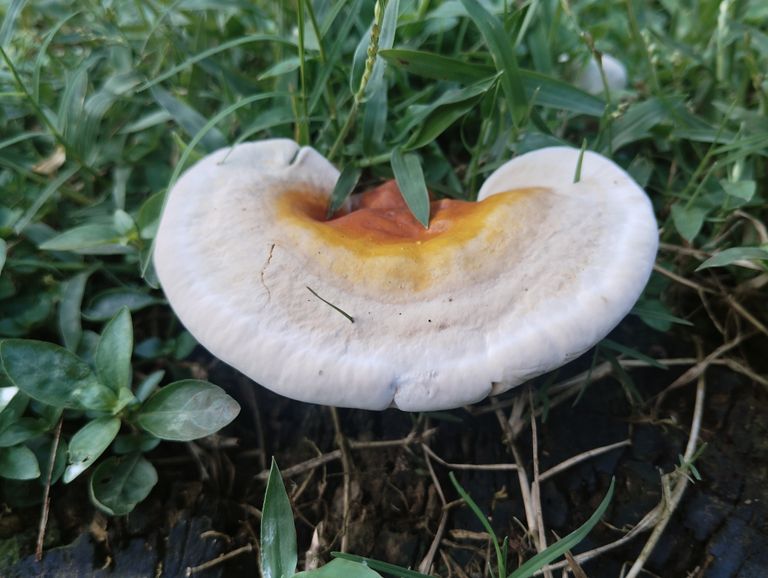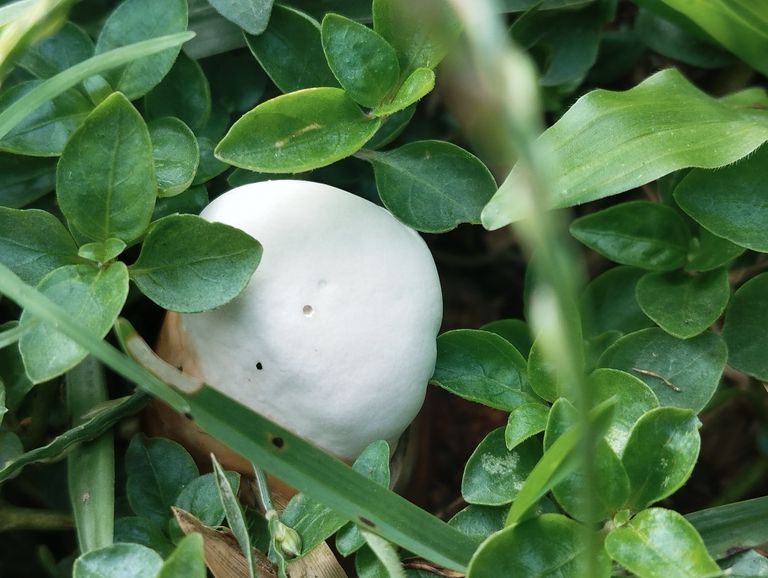Mushroom Cultivation Guide A Step-by-Step Guide.

Mushrooms are a popular and nutritious food source, rich in vitamins, minerals, and antioxidants. Growing mushrooms can be a rewarding venture and can be done on a small or large scale. Here’s a complete guide to mushroom cultivation, covering everything from the basics to the steps needed to start your own mushroom farm.
- Types of Mushrooms for Cultivation
Several types of mushrooms can be grown for commercial or personal use. Here are some popular types:
Oyster Mushrooms (Pleurotus ostreatus): Easy to grow, fast, and versatile in cooking.
Button Mushrooms (Agaricus bisporus): Commonly found in markets, these mushrooms need more precise control over temperature and humidity.
Shiitake Mushrooms (Lentinula edodes): Known for their rich flavor, these require wood-based substrates for growth.
Reishi Mushrooms (Ganoderma lucidum): Valued for their medicinal properties, though they take longer to grow.
- Preparing for Mushroom Cultivation
Successful mushroom cultivation requires proper planning. Here’s what you’ll need to get started:
Materials Needed
Substrate: A material that provides nutrients for mushroom growth. Common substrates include straw, sawdust, wood chips, and coffee grounds.
Spawn: Mushroom spawn is like a seed and is the key to starting the cultivation process. It can be purchased online or from agricultural suppliers.
Growing Space: Mushrooms need a dark, humid environment. Many people use spare rooms, basements, or specially designed mushroom grow bags.
Sterilization Equipment: To prevent contamination, sterilization of the substrate is essential. This can be done using a pressure cooker or steam.
- Steps in Mushroom Cultivation
Below is a step-by-step guide to mushroom cultivation:
Step 1: Selecting the Substrate
Choose a substrate that suits the type of mushroom you want to grow. For example:
Oyster mushrooms grow well on straw or coffee grounds.
Shiitake mushrooms prefer hardwood sawdust.
Prepare the substrate by cutting it into small pieces if necessary and removing any foreign particles.
Step 2: Sterilizing the Substrate
Sterilization is crucial to prevent contamination by bacteria or mold. Here are common methods:
Boiling: Place the substrate in boiling water for about 30-60 minutes.
Pressure Cooking: Place the substrate in a pressure cooker for 15-30 minutes at 15 psi.
Allow the substrate to cool completely before moving to the next step.
Step 3: Inoculating the Substrate
Inoculation is the process of introducing mushroom spawn into the substrate:
Mix the Spawn: Once the substrate has cooled, mix the mushroom spawn with it thoroughly.
Pack the Mixture: Place the spawn-substrate mixture in grow bags, jars, or containers. Ensure they are filled loosely to allow airflow.
Step 4: Incubation
During the incubation phase, the spawn spreads through the substrate, creating a network of mycelium (the vegetative part of the fungus):
Temperature: Maintain a temperature between 65-75°F (18-24°C) based on the type of mushroom.
Humidity and Darkness: Keep the area dark and maintain high humidity (around 85-90%).
Time: This phase usually lasts 2-4 weeks, depending on the mushroom species.
Step 5: Fruiting
After the mycelium has fully colonized the substrate, mushrooms are ready to fruit:
Light: Introduce indirect light to trigger fruiting. Mushrooms need 6-8 hours of light daily.
Temperature and Humidity: Adjust the temperature as per the species and maintain humidity by misting the area or using a humidifier.
Ventilation: Ensure fresh air circulation as it prevents CO2 buildup, which can hinder mushroom growth.
Within a few days to weeks, you should start seeing mushroom pins (small mushroom buds) forming.
- Harvesting Mushrooms
Mushrooms are generally ready for harvesting once they reach the desired size. Here’s how to harvest them:
Timing: Mushrooms can be harvested when they reach full size but before the caps open completely.
Method: Twist the mushroom at the base or cut it with a sterilized knife to avoid damaging the mycelium below.
Cleaning and Storing: Gently clean any dirt or substrate from the mushroom and store them in a cool, dry place.
- Caring for Post-Harvest Substrate
After harvesting, the substrate can sometimes produce additional flushes of mushrooms. Here’s how to care for it:
Mist the Substrate: Lightly mist the substrate after each harvest to maintain moisture.
Re-Introduce Fruiting Conditions: Maintain the humidity and temperature suitable for fruiting. Some substrates can produce 2-4 flushes before losing their nutrient value.
- Troubleshooting Common Problems
Mushroom cultivation can encounter challenges. Here are some common issues and solutions:
Contamination (Mold or Bacteria): If contamination occurs, discard the infected substrate to prevent it from spreading.
Low Yield: Low yield can result from poor-quality spawn, incorrect temperature, or insufficient moisture.
Abnormal Shape or Color: This could indicate CO2 buildup or inadequate light; ensure proper ventilation and indirect light.
- Mushroom Cultivation on a Large Scale
For those interested in scaling up, commercial mushroom farming can be profitable. Here are additional considerations:
Automation: Automated systems for temperature and humidity control can improve efficiency.
Quality Control: Ensure high standards for spawn quality and sterilization to avoid losses.
Marketing and Distribution: Build connections with restaurants, local markets, or grocery stores to sell your produce.
Final Thoughts
Mushroom cultivation can be a fulfilling and profitable endeavor when done correctly. With the right setup, knowledge, and care, you can grow fresh, organic mushrooms at home or on a commercial scale.
Health Benefits of Eating Mushrooms: A Comprehensive Guide
Mushrooms have been part of human diets for centuries, valued for their unique flavors, versatility in dishes, and powerful health benefits. Often considered a vegetable, mushrooms are actually fungi, offering a vast array of nutrients that can enhance overall health. In this blog, we’ll explore the numerous health benefits of mushrooms, their nutritional profile, and how to incorporate them into your diet for maximum impact.
- Nutritional Powerhouse
Mushrooms are incredibly nutrient-dense, meaning they provide a high level of nutrients for a low-calorie count. They are rich in essential vitamins, minerals, and antioxidants, such as:
Vitamin D: A unique plant-based source of vitamin D, essential for bone health and immune function.
B Vitamins: Including riboflavin, niacin, and pantothenic acid, which support energy production and brain health.
Potassium and Selenium: Important minerals that help regulate blood pressure and protect cells from damage.
- Boosts Immune System
Mushrooms contain beta-glucans, compounds that have immune-modulating properties. Regular consumption of mushrooms can strengthen the immune system by activating cells that fight infections. Additionally, they contain antioxidants like ergothioneine, which helps protect against chronic diseases by reducing oxidative stress in cells.
- Supports Heart Health
Due to their fiber, potassium, and antioxidant content, mushrooms can benefit cardiovascular health. Potassium helps regulate blood pressure by counteracting the effects of sodium, while fiber can reduce cholesterol levels. Certain types of mushrooms, like shiitake, contain a compound called eritadenine, which is known to lower cholesterol naturally.
- Aids in Weight Management
Mushrooms are low in calories and high in water content, making them an excellent addition to a weight-loss-friendly diet. The fiber in mushrooms also helps increase satiety, reducing the likelihood of overeating. Replacing higher-calorie foods with mushrooms can help reduce overall calorie intake without sacrificing flavor.
- Contains Anti-Cancer Properties
Several studies have suggested that regular consumption of mushrooms can reduce the risk of certain cancers, particularly breast and prostate cancer. Mushrooms contain compounds like polysaccharides and antioxidants that may help inhibit the growth of cancer cells and prevent tumor formation. In fact, the antioxidants in mushrooms are so potent that they may even reduce DNA damage in cells.
- Promotes Gut Health
The prebiotic fiber in mushrooms, such as beta-glucan, can support the growth of beneficial bacteria in the gut. A healthy gut microbiome is linked to better digestion, improved immune function, and even enhanced mental health. Regularly consuming mushrooms can help balance gut bacteria, improving digestion and reducing inflammation.
- Enhances Brain Health
The B vitamins and antioxidants in mushrooms are essential for cognitive health. Antioxidants like ergothioneine can protect.

Here's a blog outline to get started on the topic of the medicinal uses of mushrooms, with sections to cover for a 4000-word article. If you'd like, I can help you expand specific sections further.
Title: The Medicinal World of Mushrooms: Nature’s Healing Powerhouses
Introduction
Brief overview of mushrooms as a source of nutrition and medicine.
Historical use of mushrooms in traditional medicine (e.g., China, Japan, Indigenous cultures).
Modern science’s renewed interest in mushrooms for health.
Section 1: Understanding Medicinal Mushrooms
Differences between culinary and medicinal mushrooms.
Unique properties of medicinal mushrooms: polysaccharides, beta-glucans, triterpenoids, etc.
Benefits of bioactive compounds.
Section 2: Key Medicinal Mushrooms and Their Benefits
- Reishi (Ganoderma lucidum)
Known as the “mushroom of immortality” in Asia.
Benefits for immunity, stress relief, heart health, and potential anti-cancer properties.
- Lion’s Mane (Hericium erinaceus)
Benefits for cognitive health, nerve repair, and mood regulation.
Studies on its potential to support neuroplasticity and protect against neurodegenerative diseases.
- Chaga (Inonotus obliquus)
Known for its high antioxidant content.
Immune-boosting properties, potential anti-cancer effects, and skin health.
- Cordyceps (Cordyceps militaris and sinensis)
Benefits for energy, stamina, respiratory health, and athletic performance.
Effects on improving oxygen use and endurance.
- Turkey Tail (Trametes versicolor)
Highly valued for immune system support.
Use in complementary cancer treatments.
- Maitake (Grifola frondosa)
Benefits for blood sugar regulation, immune support, and anti-tumor properties.
Section 3: Health Benefits of Medicinal Mushrooms
Boosting Immunity: How medicinal mushrooms strengthen the immune system.
Fighting Inflammation: Anti-inflammatory properties and benefits for chronic disease.
Mental Health: Mushrooms that support mood regulation and mental clarity.
Anti-Cancer Potential: Active compounds that exhibit anti-cancer properties.
Section 4: How Medicinal Mushrooms Are Used
Forms: extracts, powders, teas, capsules.
Dosage and usage recommendations.
Considerations for choosing quality products.
Section 5: Risks and Precautions
Potential side effects and who should avoid them.
Drug interactions and allergies.
Importance of consulting a healthcare provider.
Conclusion
Recap of the health potential of medicinal mushrooms.
The promise of future research.
Tips for incorporating medicinal mushrooms safely into a wellness routine.
Let me know if you'd like more details on any section!

Here's a blog outline to get started on the topic of the medicinal uses of mushrooms, with sections to cover for a 4000-word article. If you'd like, I can help you expand specific sections further.
Title: The Medicinal World of Mushrooms: Nature’s Healing Powerhouses
Introduction
Brief overview of mushrooms as a source of nutrition and medicine.
Historical use of mushrooms in traditional medicine (e.g., China, Japan, Indigenous cultures).
Modern science’s renewed interest in mushrooms for health.
Section 1: Understanding Medicinal Mushrooms
Differences between culinary and medicinal mushrooms.
Unique properties of medicinal mushrooms: polysaccharides, beta-glucans, triterpenoids, etc.
Benefits of bioactive compounds.
Section 2: Key Medicinal Mushrooms and Their Benefits
- Reishi (Ganoderma lucidum)
Known as the “mushroom of immortality” in Asia.
Benefits for immunity, stress relief, heart health, and potential anti-cancer properties.
- Lion’s Mane (Hericium erinaceus)
Benefits for cognitive health, nerve repair, and mood regulation.
Studies on its potential to support neuroplasticity and protect against neurodegenerative diseases.
- Chaga (Inonotus obliquus)
Known for its high antioxidant content.
Immune-boosting properties, potential anti-cancer effects, and skin health.
- Cordyceps (Cordyceps militaris and sinensis)
Benefits for energy, stamina, respiratory health, and athletic performance.
Effects on improving oxygen use and endurance.
- Turkey Tail (Trametes versicolor)
Highly valued for immune system support.
Use in complementary cancer treatments.
- Maitake (Grifola frondosa)
Benefits for blood sugar regulation, immune support, and anti-tumor properties.
Section 3: Health Benefits of Medicinal Mushrooms
Boosting Immunity: How medicinal mushrooms strengthen the immune system.
Fighting Inflammation: Anti-inflammatory properties and benefits for chronic disease.
Mental Health: Mushrooms that support mood regulation and mental clarity.
Anti-Cancer Potential: Active compounds that exhibit anti-cancer properties.
Section 4: How Medicinal Mushrooms Are Used
Forms: extracts, powders, teas, capsules.
Dosage and usage recommendations.
Considerations for choosing quality products.
Section 5: Risks and Precautions
Potential side effects and who should avoid them.
Drug interactions and allergies.
Importance of consulting a healthcare provider.
Conclusion
Recap of the health potential of medicinal mushrooms.
The promise of future research.
Tips for incorporating medicinal mushrooms safely into a wellness routine.
Let me know if you'd like more details on any section.

Here's a blog post outline on mushroom diseases and pests for a 4,000-word blog. Let me know if you want a specific section expanded, or if you'd like me to proceed with the full post!
Title: Understanding Mushroom Diseases and Pests: A Comprehensive Guide for Mushroom Growers
Introduction
Brief introduction to mushroom farming and its popularity.
Importance of maintaining healthy mushroom crops.
Overview of common diseases and pests in mushroom cultivation.
- Common Diseases Affecting Mushroom Cultivation
Discuss the significance of identifying diseases early for successful mushroom growth.
A. Mold Infestations
Green Mold (Trichoderma spp.)
Symptoms: Greenish spores on the surface of the substrate.
Causes: High humidity and contaminated substrate.
Treatment & Prevention: Sterilizing the substrate, ensuring clean handling practices.
Cobweb Mold (Dactylium spp.)
Symptoms: White, fluffy mold that turns grayish.
Causes: Poor ventilation and high humidity.
Treatment & Prevention: Improve air circulation; treat with hydrogen peroxide.
B. Bacterial Blotch
Symptoms: Yellow to brown lesions on the mushroom caps.
Causes: Excess moisture and poor air circulation.
Treatment & Prevention: Control humidity, provide adequate air exchange, and ensure a clean environment.
C. Verticillium Disease (Dry Bubble)
Symptoms: Distorted mushroom caps and stems.
Causes: Soil contamination or infected tools.
Treatment & Prevention: Proper sanitation and use of pathogen-free casing material.
- Pests Commonly Found in Mushroom Farms
Overview of the impact of pests on mushroom growth and quality.
A. Sciarid Flies (Fungus Gnats)
Description: Small, dark-winged flies.
Damage: Feed on mycelium, leading to reduced yield.
Control Methods: Use sticky traps, maintain cleanliness, and control humidity levels.
B. Phorid Flies (Humpbacked Flies)
Description: Small, hump-backed flies often seen near substrate.
Damage: Can damage mycelium and cause contamination.
Control Methods: Use fly screens, trap systems, and proper hygiene practices.
C. Mites
Description: Small, spider-like pests.
Damage: Feed on mycelium and contaminate the substrate.
Control Methods: Maintain a clean environment and regulate temperature and humidity.
- Preventive Measures for Healthy Mushroom Cultivation
Importance of sterilizing the substrate and tools.
Guidelines for maintaining optimal humidity and temperature levels.
Regular monitoring for signs of disease or pests.
- Natural and Organic Solutions to Manage Mushroom Diseases and Pests
Overview of organic pesticides and natural treatments.
Techniques like pasteurization and UV treatments for disinfection.
How beneficial organisms (e.g., predatory mites) can help control pests.
- Case Studies: Successful Disease and Pest Management in Mushroom Farms
Examples of farms that have successfully managed mushroom diseases and pests.
Key strategies and best practices they employed.
Conclusion
Recap of the importance of disease and pest management in mushroom cultivation.
Final tips for growers to maintain a healthy crop and high yield.

Here's a blog post outline on mushroom diseases and pests for a 4,000-word blog. Let me know if you want a specific section expanded, or if you'd like me to proceed with the full post!
Title: Understanding Mushroom Diseases and Pests: A Comprehensive Guide for Mushroom Growers
Introduction
Brief introduction to mushroom farming and its popularity.
Importance of maintaining healthy mushroom crops.
Overview of common diseases and pests in mushroom cultivation.
- Common Diseases Affecting Mushroom Cultivation
Discuss the significance of identifying diseases early for successful mushroom growth.
A. Mold Infestations
Green Mold (Trichoderma spp.)
Symptoms: Greenish spores on the surface of the substrate.
Causes: High humidity and contaminated substrate.
Treatment & Prevention: Sterilizing the substrate, ensuring clean handling practices.
Cobweb Mold (Dactylium spp.)
Symptoms: White, fluffy mold that turns grayish.
Causes: Poor ventilation and high humidity.
Treatment & Prevention: Improve air circulation; treat with hydrogen peroxide.
B. Bacterial Blotch
Symptoms: Yellow to brown lesions on the mushroom caps.
Causes: Excess moisture and poor air circulation.
Treatment & Prevention: Control humidity, provide adequate air exchange, and ensure a clean environment.
C. Verticillium Disease (Dry Bubble)
Symptoms: Distorted mushroom caps and stems.
Causes: Soil contamination or infected tools.
Treatment & Prevention: Proper sanitation and use of pathogen-free casing material.
- Pests Commonly Found in Mushroom Farms
Overview of the impact of pests on mushroom growth and quality.
A. Sciarid Flies (Fungus Gnats)
Description: Small, dark-winged flies.
Damage: Feed on mycelium, leading to reduced yield.
Control Methods: Use sticky traps, maintain cleanliness, and control humidity levels.
B. Phorid Flies (Humpbacked Flies)
Description: Small, hump-backed flies often seen near substrate.
Damage: Can damage mycelium and cause contamination.
Control Methods: Use fly screens, trap systems, and proper hygiene practices.
C. Mites
Description: Small, spider-like pests.
Damage: Feed on mycelium and contaminate the substrate.
Control Methods: Maintain a clean environment and regulate temperature and humidity.
- Preventive Measures for Healthy Mushroom Cultivation
Importance of sterilizing the substrate and tools.
Guidelines for maintaining optimal humidity and temperature levels.
Regular monitoring for signs of disease or pests.
- Natural and Organic Solutions to Manage Mushroom Diseases and Pests
Overview of organic pesticides and natural treatments.
Techniques like pasteurization and UV treatments for disinfection.
How beneficial organisms (e.g., predatory mites) can help control pests.
- Case Studies: Successful Disease and Pest Management in Mushroom Farms
Examples of farms that have successfully managed mushroom diseases and pests.